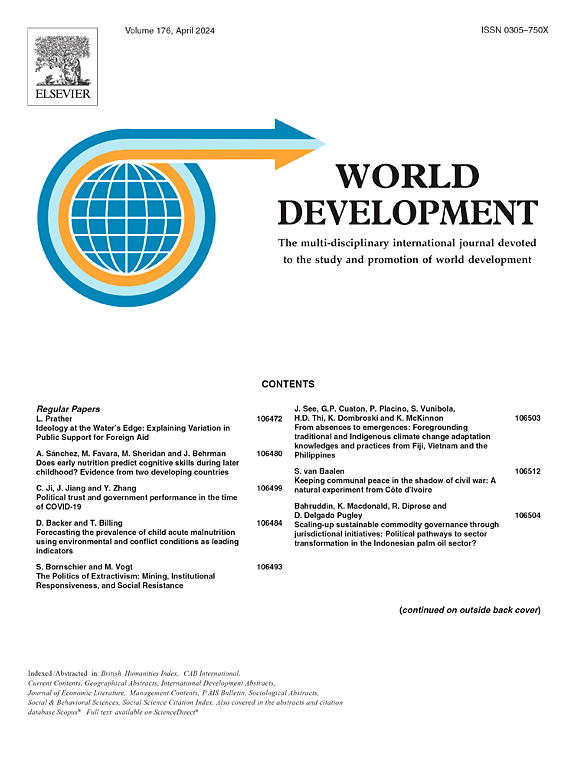Crafting work and workspaces: A qualitative study of the meaning of work for women in the weaving sector in Kashmir
IF 5.4
1区 经济学
Q1 DEVELOPMENT STUDIES
引用次数: 0
Abstract
Prior research has discussed a number of barriers that hinder Indian women’s participation in the workforce, especially outside their homes. We build on this research to explore how women use their agency to creatively negotiate with these barriers to access workplaces outside their home, as well as the non-wage benefits and meaning they associate with it. We use a qualitative methodology, privileging the voices of women workers themselves, to understand how women artisans from low-income households in Kashmir navigated structural barriers such as demands of respectability, unpaid care work and restricted mobility, to make work choices. We found that women used a specific set of resources rooted in space and time to access paid work at weaving centers outside their home. In addition, they exercised agency in remaking the workplace such that it had the right ‘mahaul’ (environment) which conformed with ideals of feminine modesty and respectability; and crafted ‘in-between’ workplaces that blended aspects of both the ‘home’ and the ‘outside’, consistent with their need for flexibility and mobility restrictions. Our study revealed that these ‘in-between’ workplaces, in turn, provided a ‘sanctuary’ like space for women weavers, which not only helped them to overcome financial precarity, but also, emotional precarity. These findings contribute to the literature on women and paid work in India by challenging the binary of ‘home-based’ and ‘outside’ to make room for novel articulations about ‘in-between’ spaces of work; and by emphasising the benefits of locational embeddedness and an ‘occupational community’ in the context of immobility in Kashmir.
求助全文
约1分钟内获得全文
求助全文
来源期刊

World Development
Multiple-
CiteScore
12.70
自引率
5.80%
发文量
320
期刊介绍:
World Development is a multi-disciplinary monthly journal of development studies. It seeks to explore ways of improving standards of living, and the human condition generally, by examining potential solutions to problems such as: poverty, unemployment, malnutrition, disease, lack of shelter, environmental degradation, inadequate scientific and technological resources, trade and payments imbalances, international debt, gender and ethnic discrimination, militarism and civil conflict, and lack of popular participation in economic and political life. Contributions offer constructive ideas and analysis, and highlight the lessons to be learned from the experiences of different nations, societies, and economies.
 求助内容:
求助内容: 应助结果提醒方式:
应助结果提醒方式:


